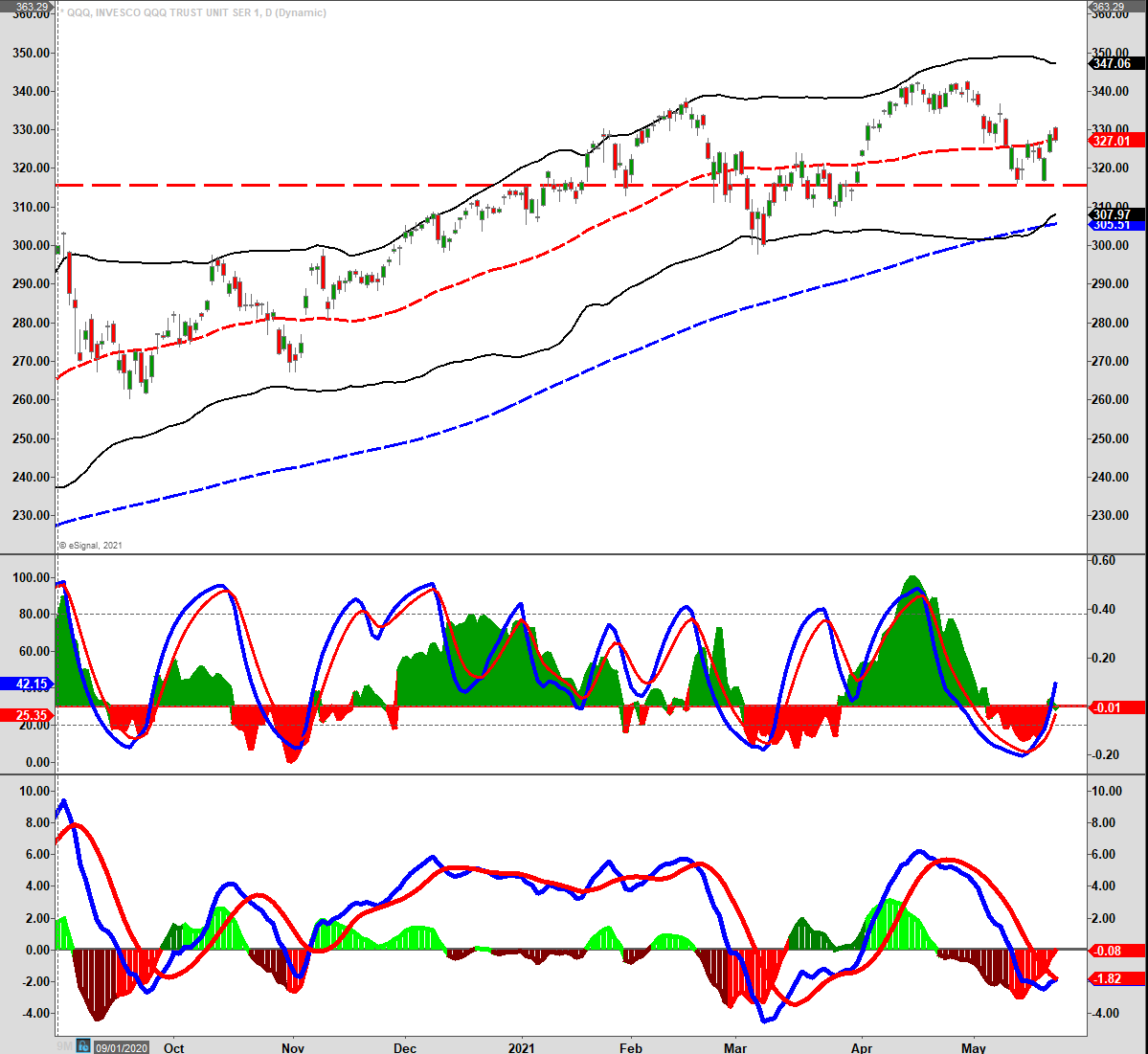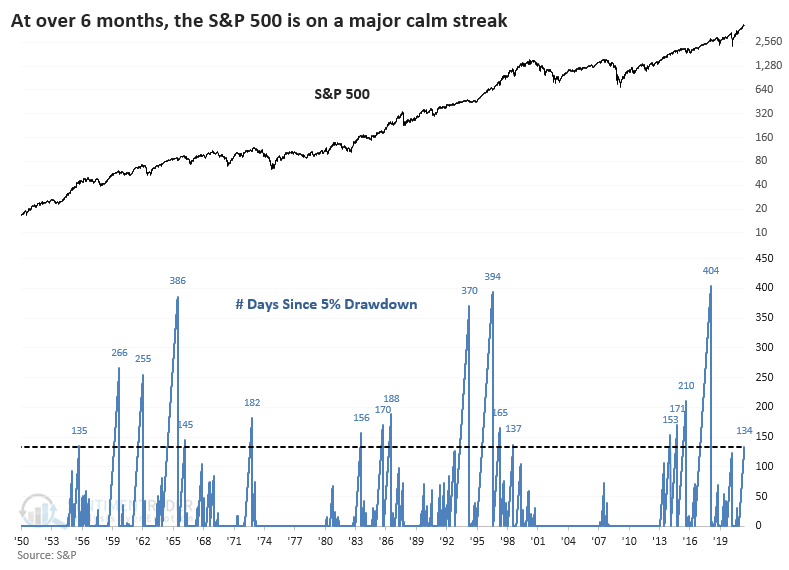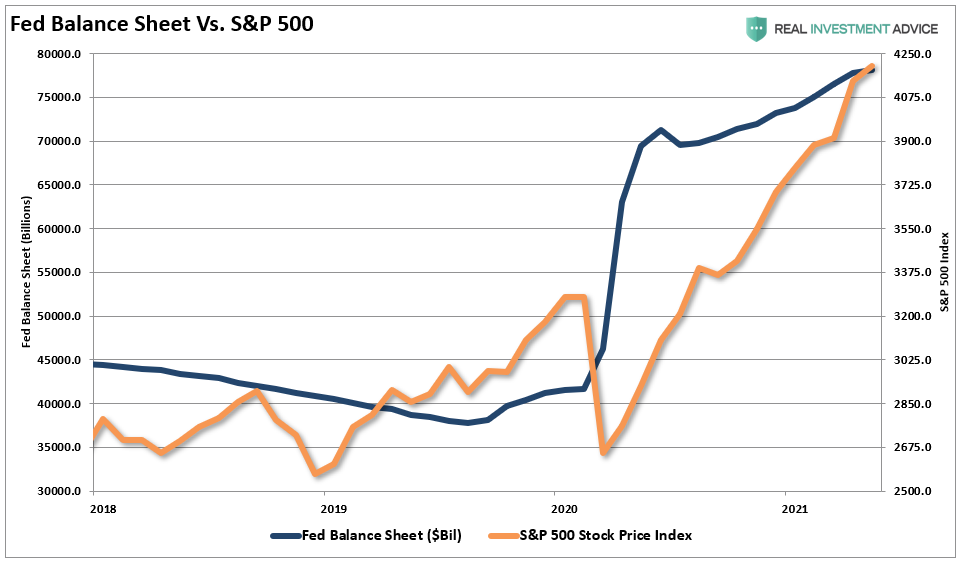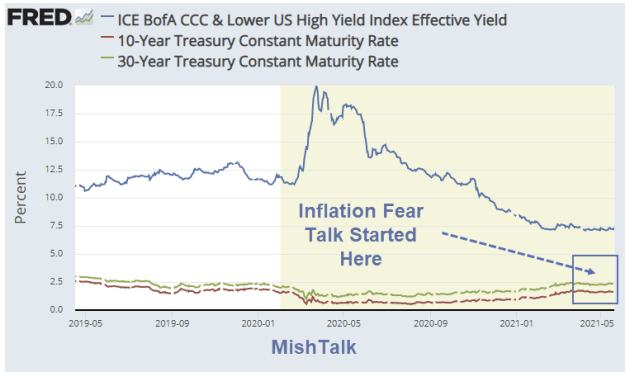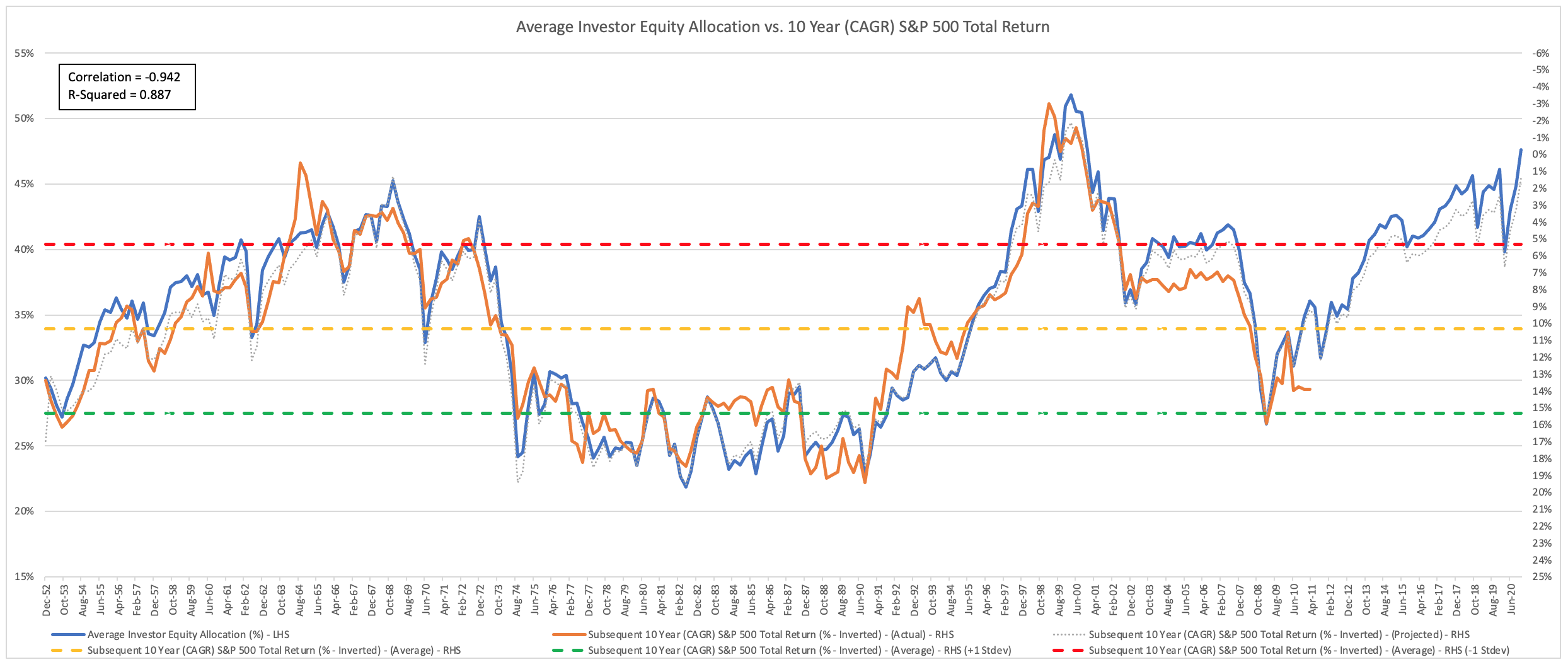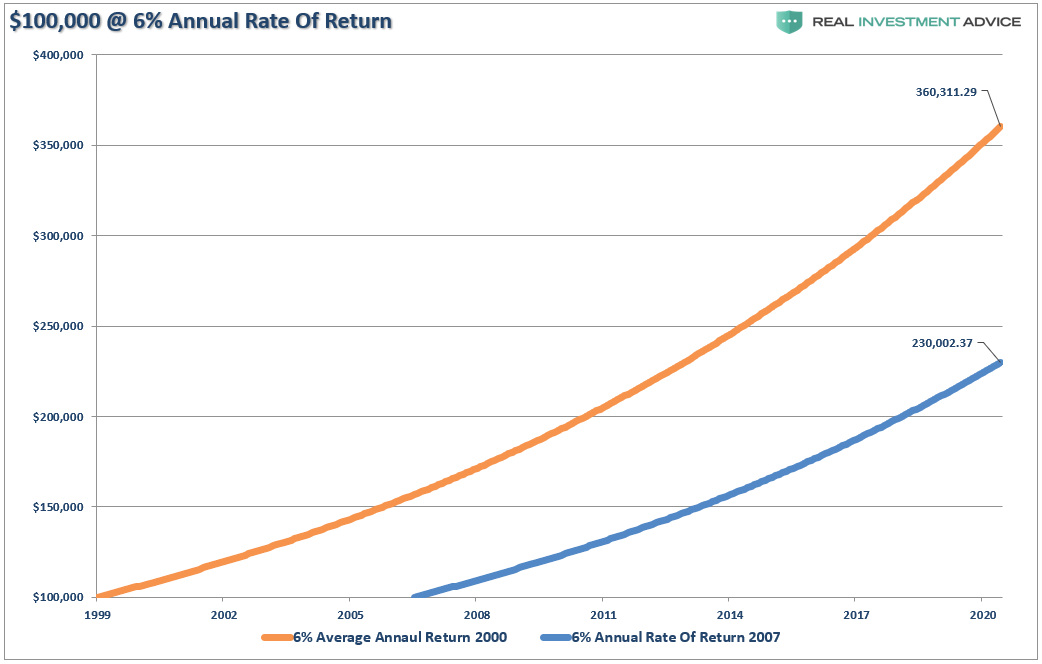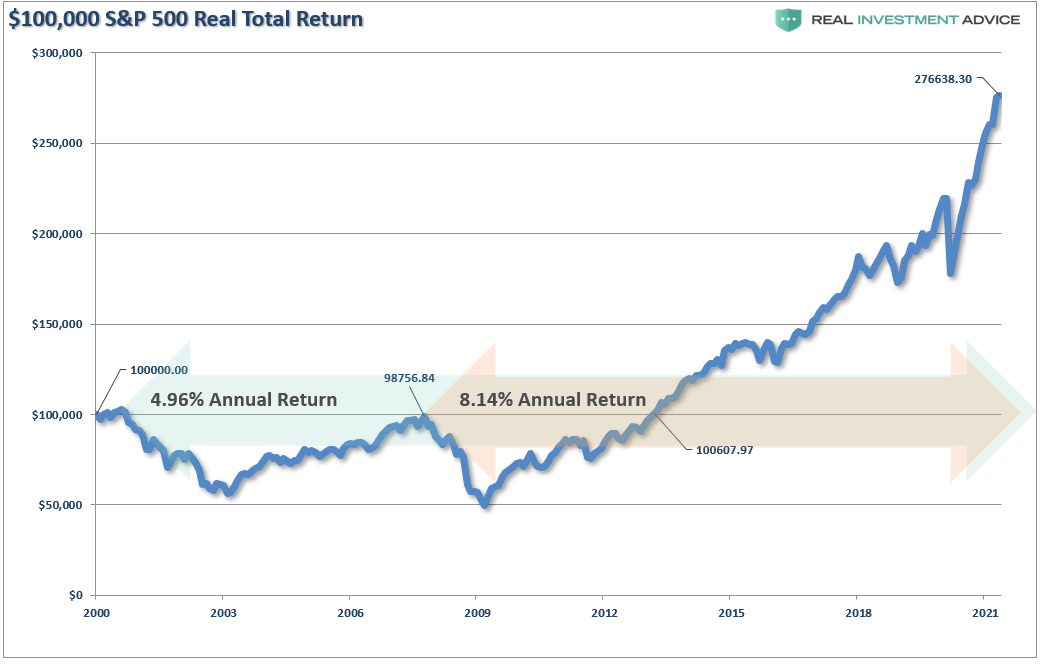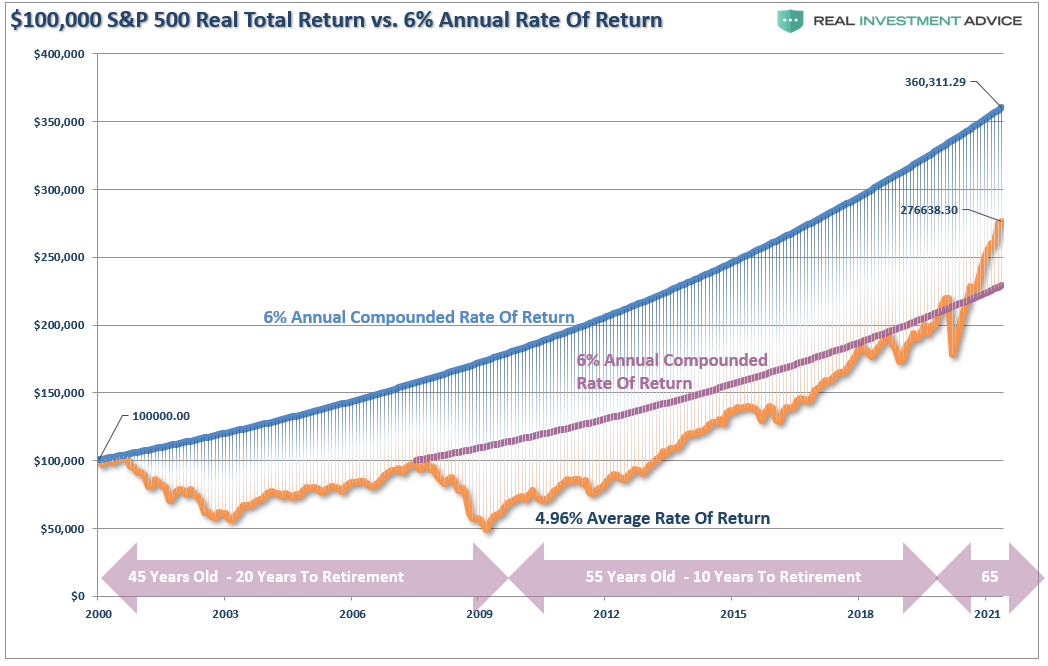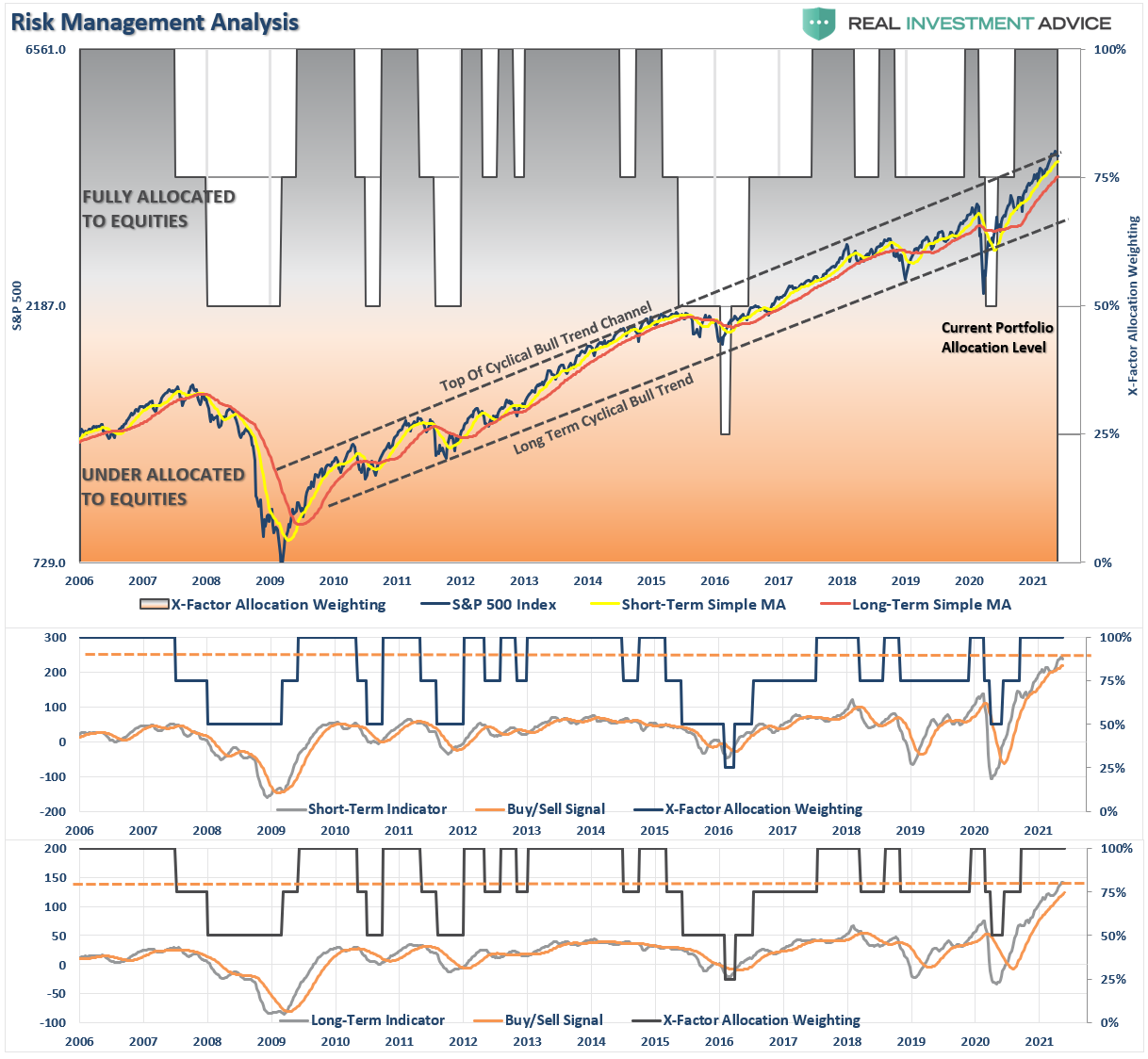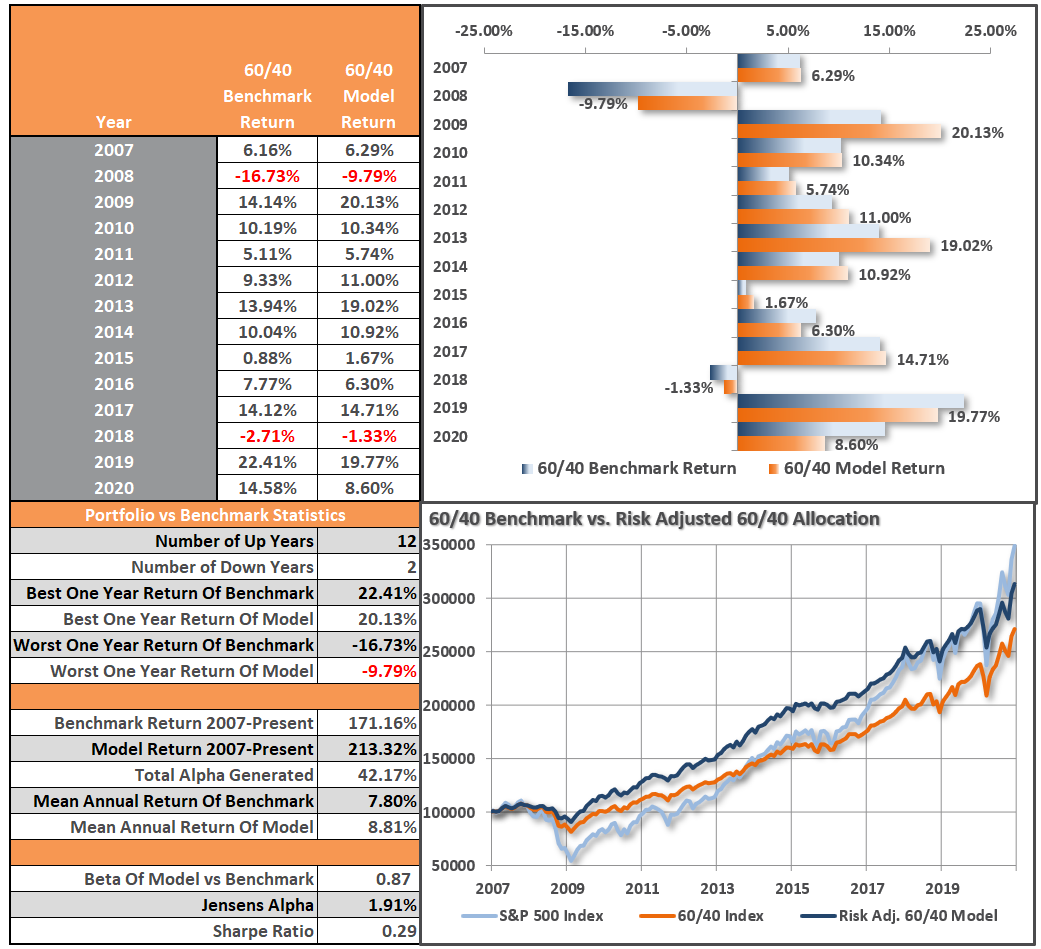Bulls Buy Stocks, As Fed Starts Talk Of Taper
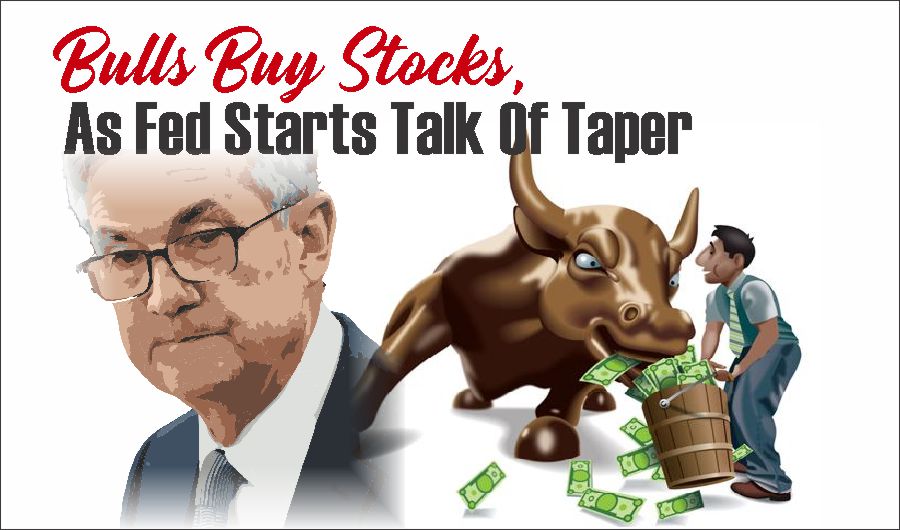
In this 05-21-21 issue of “Bulls Buy Stocks, As Fed Starts To Talk Taper.“
- Market Review And Update
- Fed Starts To Talk Taper
- Risk Is Elevated
- Portfolio Positioning
- #MacroView: NFIB Data Says It’s Only A Recovery
- Sector & Market Analysis
- 401k Plan Manager
Follow Us On: Twitter, Facebook, Linked-In, Sound Cloud, Seeking Alpha
Catch Up On What You Missed Last Week
Market Review & Update
After another rough start to the week, the bulls finally showed up and flipped our “money flow” indicators back to a buy signal. As we stated last week:
“Well, that follow-through failed to occur.Not only did the “buy signal” not trigger, but the market also broke down through the previous consolidation range. As I said, it did not work out as planned. The last exposure we took on is now pressuring the portfolio momentarily, but we should benefit from the turn if we are correct.”
With markets deeply oversold on a short-term basis and with signals at levels that generally precede short-term rallies, the rally on Thursday and Friday was not unexpected. Notably, the S&P 500 held support at the 50-dma and rallied back into the previous trading range. Importantly, we have been focusing on the Nasdaq and building an index trading position over the last few trading days for a rotation from the “reflation” trade back to the “growth” trade.
On Wednesday, the Nasdaq triggered its short-term “buy signal,” which will likely provide some relative outperformance over the S&P 500. It will be important for the Nasdaq to hold above the 50-dma into next week. If we do get some follow-through, the Nasdaq should get a confirming MACD buy signal as well (bottom panel).
As noted last week, the following statement remains very important:
“We will hold exposures at current levels for now. However, instead of looking for a more extended rally into mid-summer, we suspect this rally will be fairly short-lived.”
We do expect a counter-trend rally due to the liquidations occurring by institutional investors over the previous few weeks. Over the last few weeks, we continue to build the case of a deeper (5-10%) correction by mid-summer.
A Long Time
That view has not changed, particularly given the length of time without one. As noted recently by Sentiment Trader:
“The S&P 500 has gone 134 trading days without even a 5% pullback from a high. That’s among the longest streaks since 1928, and preceded choppy medium-term returns before momentum tended to resume.”
While we are adding exposure, we are not getting overly aggressive. The risk of a more significant drawdown outweighs the reward longer-term, but we are willing to trade short-term opportunities.
For more discussion and detail on why this is a 3-4 week trade, watch Thursday’s “3-Minutes” video.
Fed Starts To Talk Taper
The general premise of “bullish investors” is that as long as the Fed is pumping money into the markets, you have to “buy stocks.” As we discussed in “The Market Will Reach 4500,” that has been the right call.
“The correlation between the Fed’s monetary interventions and the stock market is evident. The increase in the Fed’s balance sheet remains in near lockstep with the stock market’s climb.”
Of course, you should also not the period of somewhat volatile and ZERO return from 2018 through March 2020, as the Fed tapered their balance sheet.
The Fed currently purchases $120 billion a month in Treasury and Mortgage Back securities, which has inflated both an equity and housing bubble. However, given the rapid economic recovery and rising inflationary pressures, the Fed is now setting the table for the “T” word. The following are two excerpts from the recent Fed minutes.
“A number of participants suggested that if the economy continued to make rapid progress toward the Committee’s goals, it might be appropriate at some point in upcoming meetings to begin discussing a plan for adjusting the pace of asset purchases.”
Such is important because they also realize they are responsible for elevated asset valuations.
“Regarding asset valuations, several participants noted that risk appetite in capital markets was elevated, as equity valuations had risen further, IPO activity remained high, and risk spreads on corporate bonds were at the bottom of their historical distribution.”
Let’s focus on the last sentence.
Risk Is Elevated
The most considerable risk to the “equity markets” is always a “credit-related event.” When credit stops flowing, for any reason, the resulting liquidation spreads across every market as the scramble for safety begins.
Mish Shedlock had an excellent note out on this issue this week.
“‘When I look at CCC’s rallying so hard — even if the default rates are at the low end of historical average — your chances of making money over the long run aren’t great. You’d be lucky to break even.’ – John Hussman”
Of course, CCC-rated bonds are just one step above bonds that are already in default. Yet, as Mike notes, there is “no fear” of default from bonds that historically have a very high propensity to default.
With the Fed likely on the verge of tapering, interest rates rising, and economic growth slowing later in the year, the risk of a credit-related event has increased markedly. While the media is busy focusing on “inflation,” which “will be transitory,” the credit market is the “monster under the bed.”
“I do believe fear is on the horizon. But it is not fear of inflation. Rather it is fear of paying too much for junk bonds, too much for stocks, and too much for cryptos, most of the latter will be worthless.
Writers, no doubt, will blame it on fear of inflation. That’s the excuse of the day instead of blaming the Fed with help from Congress for another huge set of bubbles.” – Mish Shedlock
Such is why understanding where you are in the current cycle is so crucial to long-term outcomes. Crashes matter and they matter a lot.
The next crash will be caused by the Fed once again. The only question is when.
It Matters When You Start
My colleague, CEO of Armor ETF’s, emailed me recently a vital point.
“There are two critical points that investors fail to understand: 1) it matters when you start and 2) losses matter because they take time to recoup the loss.
When it comes to investing, time can be your biggest enemy or your biggest beneficiary depending upon where you are (i.e. 20-year-old beginning investing journey vs. 60-year-old looking to retire in the next 5-10 years).” – Jim Colquitt
The chart below shows forward 10-year total forward returns versus starting equity allocation levels. The returns (CAGR) for the next 10-years should be around 0% (note the r-squared).
He is correct.
Let me explain. (The following is an excerpt from an upcoming article.)
Crashes Matter
Financial advisors regularly tell clients that since the market grew 6% annually since 1900. Therefore, that is what returns will be in the future. The chart below shows $100,000 invested at 6% annually from 2000 or 2007.
Unfortunately, it didn’t work out that way.
During the past 20-years, the annual return for stocks has been just 4.96% annualized. Since the peak of 2007, returns have annualized roughly 8.14%. Over the next decade, current valuations suggest average returns will return to 2% or less.
For boomers who start in 2000, whose financial plans assume high return rates to offset a savings shortfall, they are now well short of their retirement goals. For those who started in 2007 they finally got back on track this year. The question is can they keep it?
Unfortunately, investment returns are far worse, as a vast majority of the fully invested individuals in 2007 sold out of the market by the end of 2008. It took years before they returned to the market. As such, actual returns are vastly different than what the index suggests.
Here is the sequence of events by age:
- 30’s: In 1980, the “baby boomer” generation is working, saving, and investing during the ’80-’90s bull market.
- 50’s: From 2000 to 2002, the “Dot.Com” crash cuts investments by 50%.
- 53-57: From 2003-2007, the market grows savings back to breakeven.
- 57-58: The 2008 “Financial Crisis” wipes out 100% of the gains of the previous bull market and resets savings values back to 1995 levels.
- 58-63: From 2009-2013, financial markets rose, growing savings back to levels seen in 2000.
- 63-71: In 2021, investors finally made some progress towards their retirement goals.
Today, for most individuals heading into retirement, the importance of “mean-reverting events” should not be dismissed.
Portfolio Update
We made few changes to the portfolio, except for adding to our QQQ index trading position. While we seek to take advantage of a short-term oversold condition, we remain focused on long-term risk.
Such brings up some essential investment guidelines as we head into the unknown.
- Investing is not a competition. There are no prizes for winning but there are severe penalties for losing.
- Emotions have no place in investing.You are generally better off doing the opposite of what you “feel” you should be doing.
- The ONLY investments that you can “buy and hold” are those that provide an income stream with a return of principal function.
- Market valuations (except at extremes) are very poor market timing devices.
- Fundamentals and Economics drive long-term investment decisions – “Greed and Fear” drive short-term trading. Knowing what type of investor you are determines the basis of your strategy.
- “Market timing” is impossible– managing exposure to risk is both logical and possible.
- Investment is about discipline and patience. Lacking either one can be destructive to your investment goals.
- There is no value in daily media commentary– turn off the television and save yourself the mental capital.
- Investing is no different than gambling– both are “guesses” about future outcomes based on probabilities. The winner is the one who knows when to “fold” and when to go “all in”.
- No investment strategy works all the time. The trick is knowing the difference between a bad investment strategy and one that is temporarily out of favor.
The one lesson you should have learned in 2020?
“The unexpected outcome occurs more often than you expect.”
Remember, it doesn’t matter if you underperform the index on the way up. The key is not “outperforming” the index on the way down.
The MacroView
If you need help or have questions, we are always glad to help. Just email me.
See You Next Week
By Lance Roberts, CIO
Market & Sector Analysis
Analysis & Stock Screens Exclusively For RIAPro Members
Discover All You Are Missing At RIAPRO.NET
Come find out what our RIAPRO.NET subscribers are reading right now! Risk-Free For 30-Day Trial.
- Sector & Market Analysis
- Technical Gauge
- Fear/Greed Positioning Gauge
- Sector Rotation Analysis (Risk/Reward Ranges)
- Stock Screens (Growth, Value, Technical)
- Client Portfolio Updates
- Live 401k Plan Manager
THE REAL 401k PLAN MANAGER
A Conservative Strategy For Long-Term Investors
If you need help after reading the alert, do not hesitate to contact me.
Model performance is a two-asset model of stocks and bonds relative to the weighting changes made each week in the newsletter. Such is strictly for informational and educational purposes only, and one should not rely on it for any reason. Past performance is not a guarantee of future results. Use at your own risk and peril.
Have a great week!









